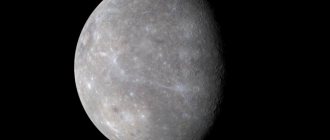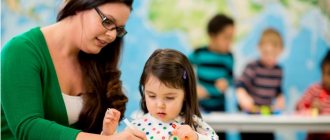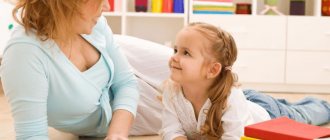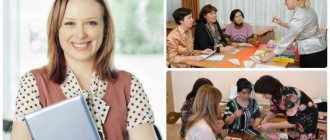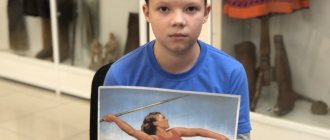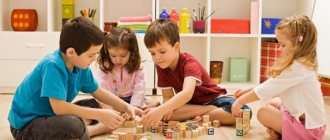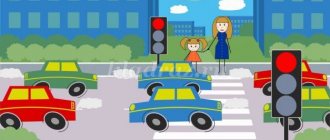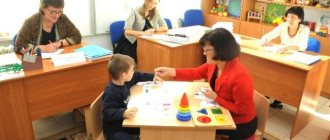“Where do vitamins live?” GCD with children of the younger group
Compiled by:
Andreeva Svetlana Viktorovna,
teacher of MADOU kindergarten No. 90 in Tyumen
Integration of educational areas: “Physical development”, “Cognitive development”, “Social and communicative development”, “Speech development”, “Artistic and aesthetic development”.
Tasks:
- Introduce children to the concept of “vitamins” and the benefits they bring;
- Teach children to distinguish between healthy and unhealthy foods, reinforce the concepts of “vegetables” and “fruits”.
- Develop fine motor skills of fingers, speech breathing;
- Continue to involve children in gaming activities. Promote the manifestation of goodwill and friendliness during the game
- Develop an emotional attitude towards artistic activity.
- Enrich children's motor experience in the process of direct activity.
- Cultivate an interest in a healthy lifestyle and a desire to take care of your health
Materials and equipment: hero-Fox, a set of pictures “Harmful and Healthy Foods”, a basket with a set of plastic vegetables and fruits, drawn pots with the outlines of vegetables and fruits, a set of pictures for gluing, glue, brushes, napkins.
Progress of educational activities:
— Guys, what is “health”, what does it mean to be healthy?
- Do you hear someone crying? ? It's not you, but who then? What happened? Let's find out.
-Look who it is? Let's say hello.
-Hello Lisa! Why are you so unhappy and crying? Are you lying on the bed? And why did you tie a scarf around your neck?
Lisa: Oh, oh, I think I'm sick.
- And what hurts you?
Fox: Everything hurts - from ears to tail
- What should we do, guys?
And you go to the pharmacy and buy me many, many pills, and I will quickly recover.
- Guys, what do you think, maybe I should first ask the doctor what medications are needed?
And you, Lysonka, most likely didn’t eat right and that’s why you became weak and sick. Eat little vitamins.
Lisa: What are vitamins? And where do they live?
-Vitamins live in various healthy foods, only vitamins are very small and cannot be seen.
-Guys, why do we need vitamins?
(We need them in order to be healthy, strong, fast, see and hear well.)
Lisa: Are there foods that are healthy and those that are not?
-Certainly.
D/i “Beneficial and Harmful”
Lisa: I was recently in a store and bought something.
Maybe you can take a look and tell me what is harmful and what is useful?
- Of course, Foxy, the guys will help you.
Here, take Foxy a basket and know what foods to eat
P/n “Put it in a basket”
Lisa: Oh, I scattered everything and mixed it up. How do I know where the vegetables are and where the fruits are?
- Don’t worry, Foxy, we will help you.
Finger gymnastics “The hostess once came from the market”
Fox: What can I make from vegetables? (soup, salad)
- Guys, let's show Foxy how to cook soup?
Breathing exercise “Orchard”
Fox: What can I make from fruits? (compote, jam)
-You know, Fox, how difficult it is to pick fruit. They grow in the garden on tall trees and you have to work hard to get them
Productive activity
Lisa: You guys are great, you told me a lot about vegetables and fruits. Do you know where vitamins live?
But I don’t know how to cook soup or compote.
- Guys, can we help Fox cook soup and compote?
In front of the children on the tables are drawn pots with outlines of vegetables and fruits, a set of pictures for sticking, glue, brushes, napkins. Children choose what they will stick on - “cook soup or compote”
Dynamic exercise “You will eat vitamins”
— We're a little tired, let's warm up
Lisa: Thank you, you helped me a lot, the compote and soup turned out wonderful and tasty, but it’s time for me to return home. Now I will eat right and eat a lot of vegetables and fruits. Goodbye!
-Well done boys.
The game is over
It’s time for us to say goodbye, and at parting we will say goodbye to our guests in unison: “Goodbye!”
Internet resources:
https://multiurok.ru/files/konspekt-nod-po-ftskm-vo-vtoroi-mladshei-gruppe-vi.html
Publication of the author on other resources:
https://slovopedagoga.ru/servisy/publik/publ?id=8018
“Certificate of publication in the media” Series A No. 0007622
We invite teachers of preschool education in the Tyumen region, Yamal-Nenets Autonomous Okrug and Khanty-Mansi Autonomous Okrug-Yugra to publish their teaching materials: - Pedagogical experience, original programs, teaching aids, presentations for classes, electronic games; — Personally developed notes and scenarios of educational activities, projects, master classes (including videos), forms of work with families and teachers.
Why is it profitable to publish with us?
1. “Kindergartens of the Tyumen Region” is an officially registered specialized media outlet at the federal level. 2. The activities of the editorial office are supported by the Department of Education and Science of the Tyumen Region 3. We issue a “Certificate of Publication” in the media. 4. The document has a unique number, is entered in the register, has the original seal of the editorial office of the online publication and signature. 5. “Certificate of publication” in the media is sent to the author in both paper and electronic versions.
Details >>>
Sample “Certificate of publication of author’s methodological material in the media.”pdf
Share
Lesson summary on the topic: “Vitamins in foods”
LLC Uchebny
Outline of an open lesson
on speech development
in the senior group
of MBDOU No. 26 “Goldfish” in the city of Rezh
on the topic “Vitamins in foods.”
Developed by: Sokolova L.G.
Full name
student of professional retraining courses “Education of preschool children”
Checked by:_Zakirova T. A.
Name of practice manager
G. Dir, 2017
Lesson topic:
"Vitamins in foods"
The date of the:
June 29, 2022
Lesson type:
group
The purpose of the lesson:
introduce the concept of vitamins, develop ideas about healthy eating, and make children want to take care of their health.
Tasks:
- teach children to distinguish vitamin-containing foods;
- Explain to children how vitamins affect the human body, their benefits and the importance of vitamins for human health;
- help children understand that health depends on proper nutrition - food should not only be tasty, but also healthy.
Planned educational results:
children learn more about the benefits of foods, proper nutrition, and vitamins.
Basic terms and concepts:
fruits, vitamins, health, nutrition.
Equipment:
colored pencils, colored paper, pear stencil, sheets of paper, basket.
Preliminary work:
talking with children about health; preparation of slides;
Lesson plan:
| Lesson stage | Content | Time |
| Start of class | Meet the doll Masha | 5 minutes |
| Progress of the lesson (process) | A conversation about vitamins, which foods contain this or that vitamin. | 10 minutes |
| End of class | Gift for Masha doll, basket with pears. | 10 minutes |
During the classes:
Educator:
Guys, the doll Masha came to visit us.
Doll Masha:
“Hello guys, I’m Masha.”
Educator:
“Hello, Masha. Why are you so sad?
Doll Masha:
“I got sick. They say that in order not to get sick, you need to eat right. Of course, I try, I only eat tasty things: ice cream, lemonade, candy. But for some reason, it doesn’t make me feel any better.”
Educator:
“Guys, is Masha eating right? No, that's not right. Tasty doesn’t mean healthy, Masha. Guys, let’s tell Masha about the right and healthy products.”
Teacher questions
: Guys, what do you like to eat the most? How do you remember the phrase “healthy products”? What is the difference between healthy and tasty foods? Do you know that foods contain vitamins? What do you know about them? And at what time of year do we get the most vitamins?
All vegetables and fruits contain a lot of vitamins. When we eat them, our body receives a large supply so that we are healthy and do not get sick. If the body does not have enough vitamins, then the person will always feel tired and will begin to get sick more often. A person needs all vitamins without exception. But each vitamin also has its own direct purpose.
I never lose heart
And a smile on your face
Because I accept
Vitamins A, B, C.
All vitamins are divided into groups A, B, C, D, E. Let's find out which foods contain these vitamins.
Vitamin A
– growth vitamin, as well as its absence, causes eye disease. Also, due to a lack of vitamin A, our skin loses its elasticity and becomes rough. Vitamin A is found in butter, egg yolk, milk, fish, carrots, onions, pumpkin, lettuce, tomatoes and apricots.
Remember the simple truth -
Only the one who sees better
Who chews raw carrots
Or drinks carrot juice.
Vitamin B
– with a lack of this vitamin, a person’s ability to work is impaired, and digestion is also disrupted. Here products such as rye and wheat bread, oatmeal, buckwheat and barley porridge, and meat will help us.
Early morning is very important
Eat oatmeal at breakfast.
Black bread is good for us
And not only in the morning
Vitamin C
– promotes the consumption of oxygen by the cells of our body. If there is not enough vitamin C in food, then the body's resistance to infectious diseases decreases, drowsiness appears, pain appears when brushing teeth, and gums bleed. Vitamin C is found in fresh vegetables, berries and fruits: green onions, black currants, rose hips, lemons and oranges.
For colds and sore throats
Oranges help
Well, it's better to eat a lemon,
Although it is very sour.
Try to solve a simple problem:
What is healthier to chew – turnip or gum?
Vitamin D
– if this vitamin is not enough, the bones will become weak, soften and bend. Vitamin D is found in foods such as: fish, liver, butter, egg yolk, milk. Vitamin D is also found in the sun's rays.
Fish oil is the healthiest
No matter how disgusting, you need to drink
He saves from illnesses
Without diseases, life is better!
Vitamin E
– anti-aging. Due to the lack of this vitamin, there is a lack of coordination of movements, rapid fatigue, lethargy, vision deteriorates, and the person looks pale and sickly. Vegetable oil, nuts, milk and dairy products, lettuce and parsley, beans, rosehip tomatoes, and white cabbage contain vitamin E.
What do you think will happen to a person if he eats only sweets?
Guys, now you know that a person needs vitamins. And for this you need to eat right. Raw vegetables and fruits are especially useful, then if you eat them often, you will have a good, cheerful mood, smooth skin, and an elegant figure.
Now, Masha, do you understand how to eat properly? Lemonade, candy, ice cream, especially in large quantities, are very harmful to health. Let's review what vitamins are contained in foods.
Vitamin A
found in food products: beets, melon, carrots, garlic, cabbage, parsley, peaches, spinach, pumpkin, turnips, celery.
Vitamin B
– rice, raisins, fish, eggs, cheese, yogurt, nuts, bananas, peas, liver, bread, mushrooms, cottage cheese, salad. In animal products - lamb, beef, crabs, shellfish.
Vitamin C
– black currants, rose hips, oranges, lemons, onions, parsley.
Vitamin D
– fish oil, cod liver, beef liver, butter.
Gifts for Masha doll.
Educator: Guys, let us make a gift for the doll Masha - a basket of fruits (bulk fruits made of paper).
We outline the pear using a stencil (several pieces so that the pear is voluminous), cut out all the pears. Spread half of the pear with glue, glue it to the other half, and so on. Then we glue our pear onto the sheet, draw a twig and a leaf.
Bottom line. Guys, what healthy products have you discovered? Now the doll Masha will eat only what is healthy, let's put our pears in the basket. Keep it up, Masha, get better.
Doll Masha: thanks, guys! Now I will eat only healthy foods: vegetables and fruits.
Assignment for students to reflect on their activities:
what they understood during the lesson, what they realized, what difficulties they experienced, whether they managed to complete the task or not, whether it was comfortable during the lesson.
Forms of control and evaluation of lesson results:
The form of control is frontal (assignment to the whole group), the type of control is external (the teacher controls the children’s activities), the results are assessed independently by the children.
Homework information:
gave poems to several children to learn by heart.
List of used literature
:
1. Bondareko T.M. Complex classes in the middle group of kindergarten: A practical guide for educators and methodologists of preschool educational institutions. – Voronezh: Uchitel Publishing House, 2004.
2. Obukhova L. A., Lemyaskina N. A., Zhirenko O. E. New 135 health lessons, or the School of Doctors of Nature. – M.: VAKO, 2007.
Self-analysis of the lesson
1. External relations of the lesson.
The role of this lesson in the topic being studied is great; it will be interconnected with subsequent lessons that will talk about a healthy lifestyle.
2. Characteristics of the purpose of the lesson based on the characteristics of the group.
Lesson objectives are the most important pillar for learning a healthy lifestyle. In the older group, this is especially true, since children are susceptible to the influence of advertising and other media. From an early age, we need to teach children to take care of their health and understand the importance of vitamins.
3. Characteristics of the lesson plan. Characteristics of the stages of the lesson.
I. General organization of the lesson
The lesson begins with an introduction to the doll Masha, who came to visit the children. She talks about how she got sick and therefore eats right, namely, she eats only the most delicious things. This stage takes 5 minutes.
Next, the concept of “vitamin”, its role in human life, and its impact on health are revealed. Also, during the conversation, children will learn which foods contain vitamins and which ones. This stage takes 10 minutes. After learning, children are invited to make a gift for Masha’s doll - voluminous pears, which are then put into a basket. This will take 10 minutes. Cognitive activity is frontal work. lesson by time. We summarize the lesson together by answering questions about vitamins.
II. Contents of the lesson
The focus of the lesson is developmental for children of the older group.
Various materials were selected for this lesson, namely, books with riddles about vitamins, visual material depicting food products. Not only were conversations held about the benefits of fruits, but the children themselves made a voluminous pear for the Masha doll. The children successfully learned the material about vitamins.
4. Functional analysis of the lesson.
The structure of the lesson corresponded to the set goal and the capabilities of the group. The most successful moment in a teacher’s activity is the use of visual material. The interaction between the teacher and the children contributed to the successful formation of the lesson results.
5. Evaluation of the final result of the lesson.
Assessing the quality of the lesson, the skills of the children, we can say that this lesson contributed to the consolidation of the material and the formation of new knowledge. The assigned tasks were completed, and the final results brought positive emotions to the children. I evaluate my lesson on the good side, it was effective, interesting for children, and most importantly, useful and educational.
